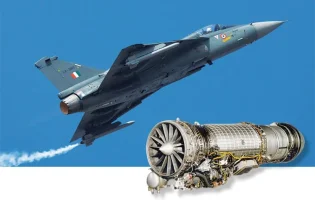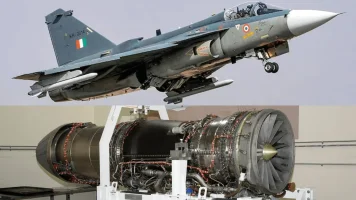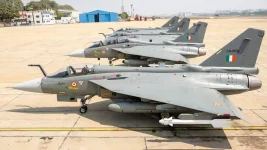- Views: 2K
- Replies: 16

India's commitment to strengthening its air defence capabilities has been underscored by the unveiling of the "Swayam Raksha Kavach" ("Self-Defence Armor") Electronic Warfare (EW) Suite.
This cutting-edge system, detailed in the Indian Ministry of Defence's annual report for 2022-23, is a major milestone in the development of the Light Combat Aircraft (LCA) Mk1A program.
The Essential Role of Electronic Warfare
In modern aerial combat, electronic warfare plays a pivotal role. Radar systems, used extensively for detection and tracking, are crucial for both offensive and defensive operations.Electronic Warfare suites are designed to disrupt these systems, giving fighter jets a critical edge in contested airspace. The Swayam Raksha Kavach is India's answer to the growing sophistication of these electronic threats.
Key Components and Capabilities
- State-of-the-Art Radar Warning Receiver (RWR): The heart of the EW suite is its exceptionally sensitive RWR. Built with four wideband receiver channels, it offers far greater situational awareness by detecting, classifying, and pinpointing the direction of both ground-based and airborne radar signals.
- Advanced Self-Protection Jammer (ASPJ): To actively counter detected threats, the Swayam Raksha Kavach employs an ASPJ using Digital Radio Frequency Memory (DRFM) technology. This allows it to generate highly targeted jamming signals, scrambling enemy radar and masking the aircraft's presence.
- Comprehensive Protection: The RWR's 360-degree coverage and processing power (up to a million pulses per second) ensure the LCA Mk1A is shielded against threats from all directions and can successfully navigate even the most complex electronic warfare environments.
- Flexible Countermeasures: High Power Pulse and Continuous Wave jamming channels within the ASPJ mean the system can intelligently disrupt a diverse range of enemy radar types.
A Strategic Leap Forward
The integration of the indigenously developed Swayam Raksha Kavach EW Suite is a transformative upgrade for the LCA Mk1A. It solidifies the aircraft's position as a highly capable and survivable platform within the Indian Air Force's arsenal.Furthermore, this success signifies India's growing prowess in the development of technologically advanced defence systems, bolstering the nation's self-reliance in a critical domain.



